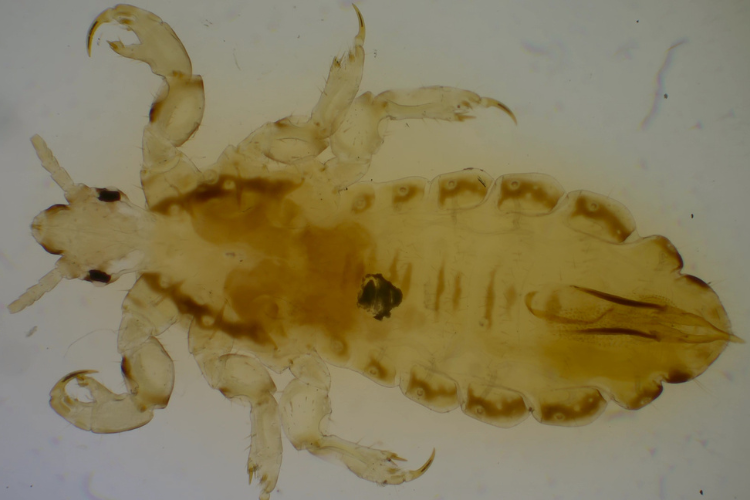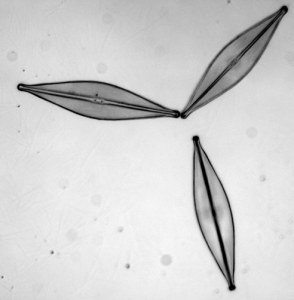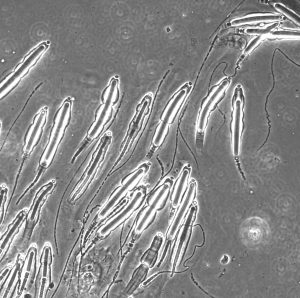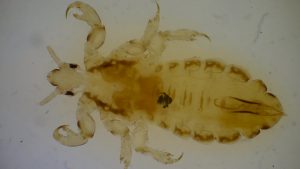
The Gibson Microscope Slide Collection: Behind the scenes at the museum
Blog by Dr David Sigee
Following an introductory article on the collection of Victorian microscopic slides in the Museum of Medicine and Health, Dr David Sigee shares more on the Gibson slide collection. A new full report details, tray by tray, the rich variety and high quality of this set of historic slides, the earliest dating to 1862. Dr Sigee has captured images using a ZEISS photomicroscope, located in the Stopford Building.
The A. R. Gibson collection has 25 numbered trays – each containing 24-30 microscope slides housed in a wooden cabinet. The collection is comparable to those in other museums formed principally by gentlemen with scientific interest from the mid to late 19th century. In the Victorian era, such cabinets held slides readily available for casual examination by the owner and were an indication of scientific interest in the natural world.

Slide 4.4 Navicula eujudata 40 µm
A wide diversity of material survives, from the simplest unicellular organisms to complex higher plants and invertebrates. Slides typically present the Latin names of the specimen with supplementary information on supplier, place of collection and date of preparation.
Diatoms
A specialised group of algae (unicellular plants) occurring singly or in colonies, present in freshwater and marine environments. Diatoms were particularly attractive to Victorian microscopists, as cell wall ornamentation could be clearly seen under bright-field illumination. These algae occur suspended in water or on the surface of water plants or stones. In some cases, the aesthetic quality of the specimen was enhanced by the preparer in careful arrangement to form a pattern (Slide 4.4).

Slide 6.8 Gloiotrichia natans 60 µm
Botanical specimens
Trays six to eight contain a mix of algae, fungi, mosses, liverworts and ferns. Examples emphasize the evolutionary diversity of plants and include the most primitive organisms – prokaryotic blue green algae (slide 6.8). Victorians would have had little appreciation of the future ecological significance of these organisms, currently a problem in environmental terms. They produce a wide range of toxins in freshwater and have an increasing population worldwide as a response to human-activated eutrophication and global warming.

Slide 20.13 Pediculus capitis 1mm
Insect parasites
Interest in invertebrate parasites becomes a dominant theme in trays 20 to 23 where nearly all the slides display lice and fleas. These external parasites occur on the outer surface of a range of vertebrate hosts, including fish, birds and humans! (Slide 20.13)
Curios
David has also uncovered unexpected items in the collection including non-biological examples, reflecting the Victorian fascination and the novelty of using light microscopes. Specimens include a micro-version of The Lord’s Prayer, details of bank note lettering and vases of flowers created from butterfly scales.
Future Studies
Details about Gibson as a collector remain unknown but future research will focus on comparisons to other Victorian slide collections and slide suppliers, in preparation and sale. David’s work we hope, encourages further research into lesser-known areas of the museum collection.
Read more about David’s research A remarkable collection of late Victorian slides: The Museum of Medicine and Health – FBMH News (manchester.ac.uk)
To find out more about Environmental Sustainability: visit the Faculty’s intranet page, read our ES Good Newsletter or visit our blogsite.

0 Comments